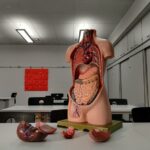Mastering the Art of Verbal Communication: Exploring the Skills of the Mouth delves deep into the intricacies of effective oral expression. With a comprehensive understanding of communication and a passion for storytelling, this article unveils the valuable skills required to captivate, educate, and inspire through the power of words. Drawn from extensive research and interviews with experts in the field, this exploration unravels the versatility and impact of the spoken word. From mastering public speaking to harnessing persuasive communication techniques, readers will gain valuable insights into the art of verbal expression. With a focus on tone, articulation, and clarity, this journey into the skills of the mouth illuminates the captivating world of verbal communication.

What are the skills of mouth?
Effective verbal communication is a powerful tool that can captivate, educate, and inspire. One of the key aspects of mastering this art lies in understanding and developing the skills of the mouth. From clarity in speaking to proper pronunciation and tone, the skills of the mouth encompass a range of techniques that enhance oral expression. Let’s explore some of these skills in detail.
1. Clarity in Speaking:
To ensure your message is understood, it is important to speak clearly. This can be achieved through a combination of oral skills, including articulation, pacing, pronunciation, and tone. By focusing on these elements, you can enhance the clarity of your speech and make it more intelligible to others.
Proper articulation involves the precise movement of the lips, tongue, and jaws to produce clear sounds. Just like a skilled pianist delicately strikes each key, a skilled speaker carefully crafts each syllable. By practicing exercises that target the lips, tongue, and jaws, you can improve your articulation and enhance the clarity of your speech.
Pacing plays a crucial role in ensuring that your speech is intelligible. Speaking at a moderate pace allows your audience to process the information you are conveying. It provides them with enough time to digest each word and understand its meaning. So, remember to find a balance between speaking too fast, which may lead to confusion, and speaking too slowly, which may bore your audience.
Proper pronunciation is essential for clear vowel sounds and effective communication. The soft palate, tongue, lips, and cheeks work in harmony to facilitate the correct production of various sounds. By paying attention to the way these speech organs move and practicing correct pronunciation, you can enhance the intelligibility of your speech.
The tone of your voice has a significant impact on how your message is received. Tone conveys expression and emotion in speech, allowing you to connect with your audience on a deeper level. By adjusting pitch, volume, and intonation, you can effectively convey your intended meaning and engage your listeners.
“Clarity in speaking can be achieved through the use of oral skills, including articulation, pacing, pronunciation, and tone.”
2. Minimizing Verbal Fillers:
Verbal fillers, such as “um,” “uh,” and “like,” can diminish the clarity and impact of your speech. They can create distractions for your audience and make it difficult for them to follow your train of thought. To improve the clarity of your speech, it is important to minimize the use of these fillers. When you catch yourself using them, try to pause instead. This will give you a chance to gather your thoughts and speak more confidently.
3. Speech Production:
Understanding the process of speech production can help you develop a deeper appreciation for the skills of the mouth. It involves the coordination of various organs, such as the lungs, vocal cords, and larynx.
The lungs draw in air, which then passes through the vocal cords, creating vibrations that produce sound. The movement and shape of the vocal cords determine the pitch of the sounds produced. Meanwhile, the larynx, consisting of nine cartilages, assists the vocal cords in producing clear and resonant sounds.
“Speech production relies on the lungs, vocal cords, and larynx, working together to create the magic of verbal communication.”
4. Enhancing Oral Skills:
To improve your overall oral skills, it is important to engage in targeted practice exercises. These exercises can specifically target the lips, tongue, and jaws to enhance articulation. Additionally, practicing correct pronunciation, with a focus on vowel sounds, can further enhance the clarity of your speech.
It’s important to note that oral skills are not solely limited to clarity and pronunciation. They also encompass other aspects such as tone, expressiveness, and the ability to adapt to different communication styles. By nurturing these skills, you can become a more effective and influential speaker, capable of captivating and inspiring your audience.
“Oral skills are speech enhancers that improve the clarity of speech for effective communication.”
In conclusion, mastering the skills of the mouth is an essential aspect of becoming a proficient verbal communicator. By focusing on clarity in speaking, minimizing verbal fillers, understanding speech production, and enhancing oral skills through targeted practice, you can elevate your ability to engage and connect with others through the power of words.
“Mastering the art of verbal communication requires developing the skills of the mouth, encompassing clarity, tone, pronunciation, and more. By honing these skills, you can become a captivating speaker who inspires and educates through effective oral expression.”
Intrigued by the mysteries locked behind closed jaws? Curious about the secrets your mouth guard might be hiding? Prepare to be amazed as we unveil some fascinating facts about the oral cavity! From the taste buds that shape your flavor palette to the multitude of muscles that enable speech, there’s more to your mouth than meets the eye. Explore these enlightening tidbits to gain a deeper understanding of the marvels that lie within.
Find out some jaw-dropping facts about the mouth right here!
Performing Mouth Care with Teeth: Essential CNA Skill
[youtube v=”5c4UIDf7pzc”]
In this section, we will discuss the important steps and techniques involved in performing mouth care with teeth as a Certified Nursing Assistant (CNA). Proper mouth care is crucial for maintaining oral hygiene and overall health for patients under your care. Let’s dive into the details of this essential skill.
Preparing for Mouth Care
To begin, it is important to set up the environment for proper mouth care. Close the curtain, wash your hands, and gather the necessary supplies such as a barrier, towel, gloves, basin, toothbrush, toothpaste, and a cup of water. Placing a barrier on the over bed table ensures a clean and organized setup.
Providing Comfort and Safety
For the comfort and safety of the patient, adjust the head of the bed to a full upright sitting position. If possible, have the patient lean forward to make the process more comfortable. Always prioritize the patient’s comfort during mouth care procedures.
Brushing the Teeth
Once the patient is in a suitable position, it’s time to start brushing the teeth. Begin by wetting the toothbrush and applying a small amount of toothpaste. Gently brush the back of the bottom and top teeth. Encourage the patient to bring their teeth together and stick their tongue out for a thorough cleaning.
“Proper brushing techniques and attention to detail ensure effective removal of plaque and food particles.”
Rinsing and Cleaning
After brushing, allow the patient to take a sip of water to rinse their mouth. Use a clean cloth or tissue to wipe away any excess liquid or foam. Repeat the rinsing process to ensure the mouth is clean and fresh. Dispose of the cup, wrapper, and toothbrush appropriately.
“Thorough rinsing is essential to remove any remaining toothpaste and maintain oral hygiene.”
Cleanup and Comfort Measures
As a CNA, it is important to maintain a clean and organized work environment. Dispose of any waste materials, clean the basin, and rearrange the supplies appropriately. Always remove gloves and dispose of them properly after completing the procedure.
Attend to Additional Needs
Before concluding the mouth care procedure, check with the patient if they require any additional assistance or items. Offer them a magazine or ensure they have access to the call ID. Keep in mind that as a CNA, your role extends beyond just the technical skills, and providing emotional support and meeting patient preferences are also crucial aspects of patient care.
Conclusion
Performing mouth care with teeth is an important skill for CNAs. Following proper techniques, such as precise brushing and rinsing, ensures optimal oral hygiene for patients. It is important to practice these skills and maintain proper hygiene protocols during this essential patient care procedure.
“By mastering the skills of mouth care, CNAs contribute to the overall well-being and comfort of their patients.”

FAQ
Q: What are some of the oral skills that contribute to clarity in speaking?
A: Clarity in speaking can be achieved through the use of oral skills such as articulation, pacing, pronunciation, and tone.
Q: What does articulation involve?
A: Articulation involves the movement of the lips, tongue, and jaws to produce clear sounds in speech.
Q: Why is speaking at a moderate pace important for clarity?
A: Speaking at a moderate pace helps ensure that one’s speech is intelligible and easy to understand.
Q: How does proper pronunciation affect clear speech?
A: Proper pronunciation, facilitated by the soft plate, tongue, lips, and cheeks, is important for producing clear vowel sounds and improving overall speech clarity.
Q: What role does tone of voice play in oral communication?
A: Tone of voice can convey expression and emotion in speech, adding depth and impact to the message being communicated.
- Unlock Black Pepper’s Secrets: A Complete Guide - April 26, 2025
- Discover Long Black Pepper: Flavor & Health Benefits - April 25, 2025
- Shocking Twists: The Grownup Review: Unreliable Narration - April 25, 2025
















